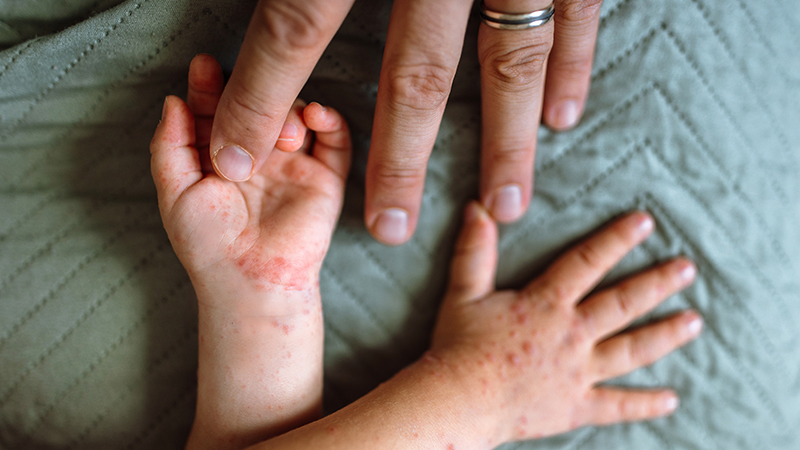Mpox: What You Need to Know
Transmission and Treatment
Published July 2022
Mpox (formerly known as monkeypox) is a viral illness that typically begins with flu-like symptoms and swelling of the lymphnodes. It typically progresses to a rash on the face and body.
Identifying Symptoms
If you have a mpox infection, your illness may begin with any of the following:
- Fever
- Headache
- Muscle aches
- Backache
- Swollen lymph nodes
- Chills
- Exhaustion
The transmission of mpox is very different to SARS-CoV-2.— Claudia A. Hawkins, MD, MPH
Within one to three days after the initial fever, you may develop a rash, which often begins on the face, and then spreads to other parts of the body. This rash runs a similar course to smallpox: It resembles pimples or blisters, and eventually scabs over and heals.
Treating Illness
There is no one specific treatment for mpox. However, mpox and smallpox viruses are genetically similar, so vaccines and antiviral drugs made to protect against smallpox may be useful to help prevent and treat mpox.
Stopping the Spread
Mpox is rare and does not spread easily between people without close contact. Transmission of the disease is typically by direct contact with body fluids or mpox sores, rashes or scabs, or through large respiratory droplets. Sexual contact may also hold potential for transmission, and the virus could potentially be picked up from surfaces, including bed sheets and sex toys.
A person with mpox can spread the virus for several weeks, with illness typically lasting two to four weeks. It is transmissible from the time symptoms start until all sores and wounds have healed and new skin has formed.
“Although many people are fearful about mpox causing another pandemic like COVID-19, the transmission of mpox is very different to SARS-CoV-2, the virus that causes COVID-19,” says Claudia A. Hawkins, MD, MPH, an infectious disease specialist at Northwestern Medicine. “We have experience from previous outbreaks regarding how to prevent spread of the infection.”






